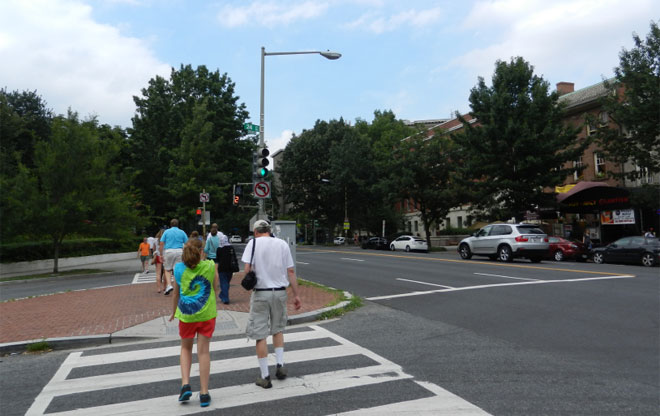
A Zoo in a Neighborhood
Taking the Red Metro train in D.C. will get you close to the National Zoo if you get off at the Woodley Park Metro stop. Walk a few blocks north on Connecticut Avenue, a major boulevard within the city, and it will take you to the entrance of the zoo. The notion that the zoo is nestled within an urban neighborhood makes it incredibly accessible for residents and tourists alike.
Image: Radhika Mohan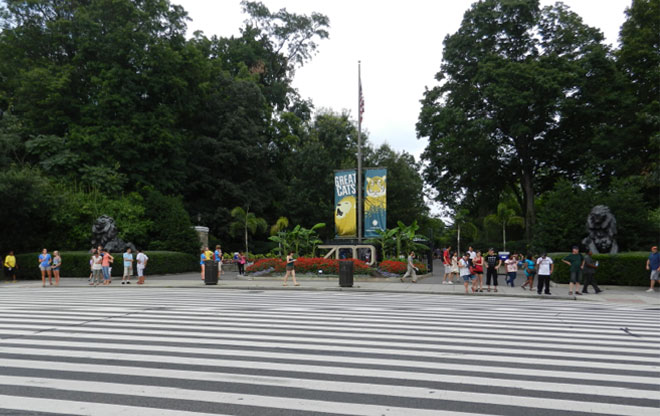
The Entrance
The National Zoo entrance off of Connecticut Avenue is framed by lush plantings, creative signage, and one of the widest crosswalks to protect pedestrian traffic headed to and from the area. Just across the street from here are residential units, reminding visitors how this zoo is uniquely situated within a neighborhood.
Image: Radhika Mohan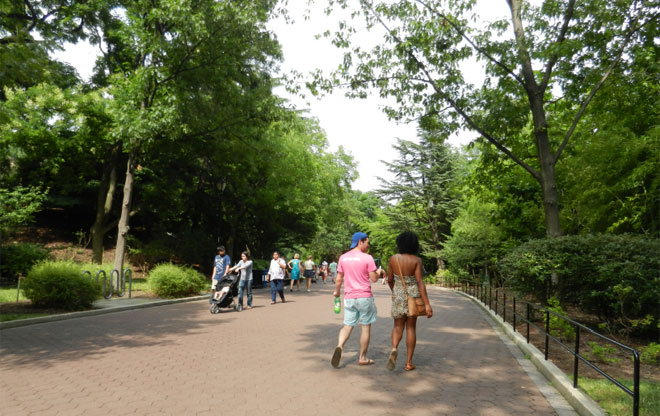
The World of an Olmstedian Landscape
As soon as you enter the grounds of the National Zoo, you are enveloped in a different world. Immediately, the sounds of busy Connecticut Avenue are a distant memory and you are swallowed into the world of an Olmstedian landscape. Lush trees frame the main path of the Zoo, which leads to various animal habitats.
Image: Radhika Mohan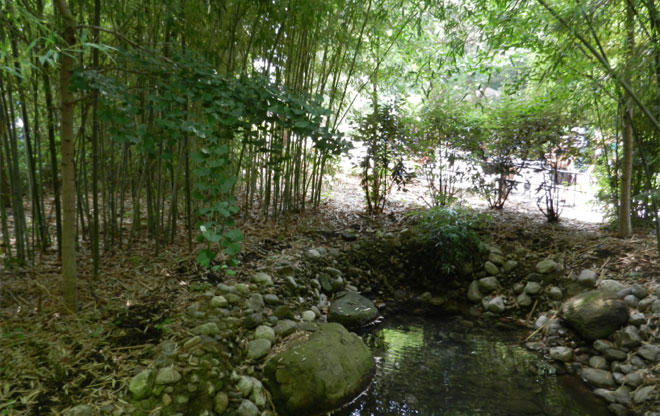
Creative Plantings
Creative plantings are positioned all over the park to hide parking and maintenance facilities while simultaneously filtering and managing stormwater runoff. This inlet was cleverly disguised in the Asia section of the zoo, featuring lush bamboo arrangements.
Image: Radhika Mohan
Bamboo Frames the Experience
Further along, bamboo frames the intimate pathways within the Asia exhibits, picking up on the native habitats of the animals within. Here, the pathways narrow off the main walking path, creating a level of coziness, particularly during the D.C. summer heat.
Image: Radhika Mohan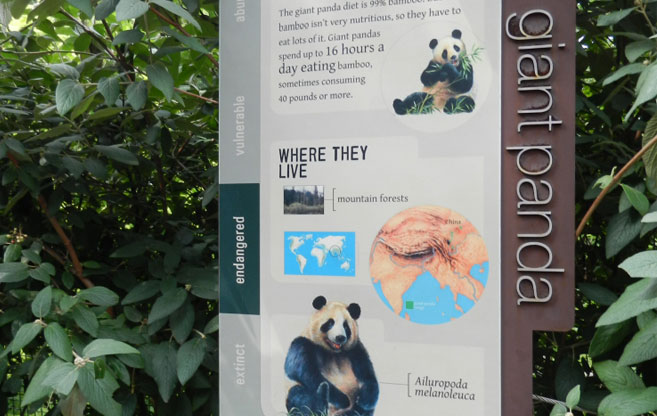
Clear Signage
Clear signage is integrated into the surrounding shrubbery, describing the animals within the exhibits beyond.
Image: Radhika Mohan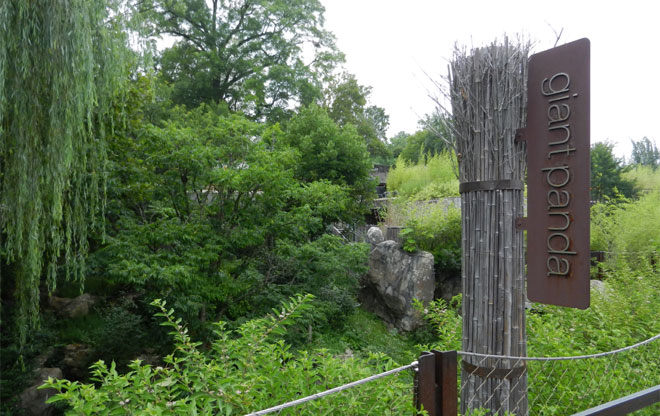
Contrasting Materials
This piece of signage over looks the panda exhibit and uses dried bamboo to contrast with the live bamboo on surrounding pathways. Elevated walkways in the exhibits maximize the overall sloping topography of the park, while giving visitors different vantage points to see animals.
Image: Radhika Mohan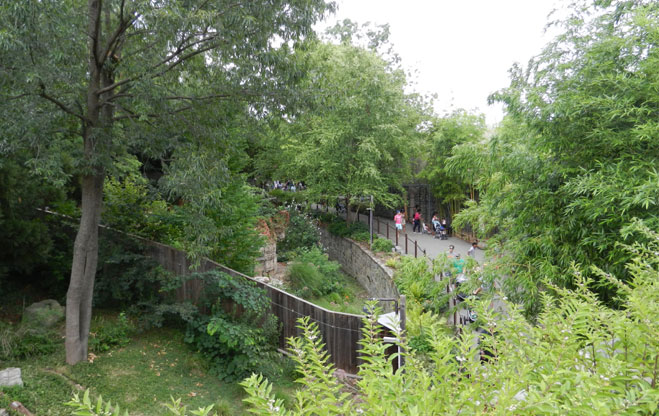
The Topography Opens Up Views
Despite lush and layered vegetation, you never lose sight of where you are within the park, particularly in relation to other pathways. If you enter the National Zoo on Connecticut Avenue and walk south, the descending topography opens up views and perspectives of exhibits ahead.
Image: Radhika Mohan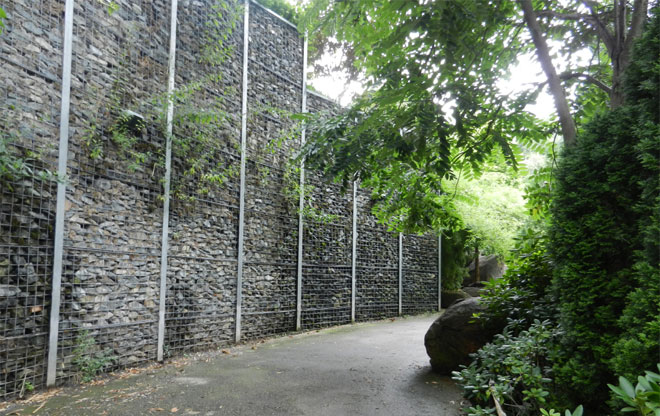
Gabioned Walls
Gabioned walls retain soil and shore up the sloping topography. These natural walls are used within the exhibits, while formal stone and brick retaining walls are used in other major areas of the park where there is more pedestrian traffic.
Image: Radhika Mohan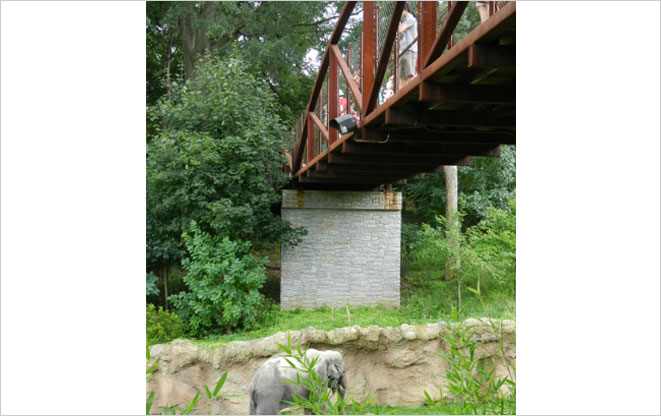
The Elephant Pays No Mind
Rustic bridges bring visitors out and over the landscape to immerse people in the park. Here, you can almost touch the elephant below, who pays no mind to the spectators above.
Image: Radhika Mohan